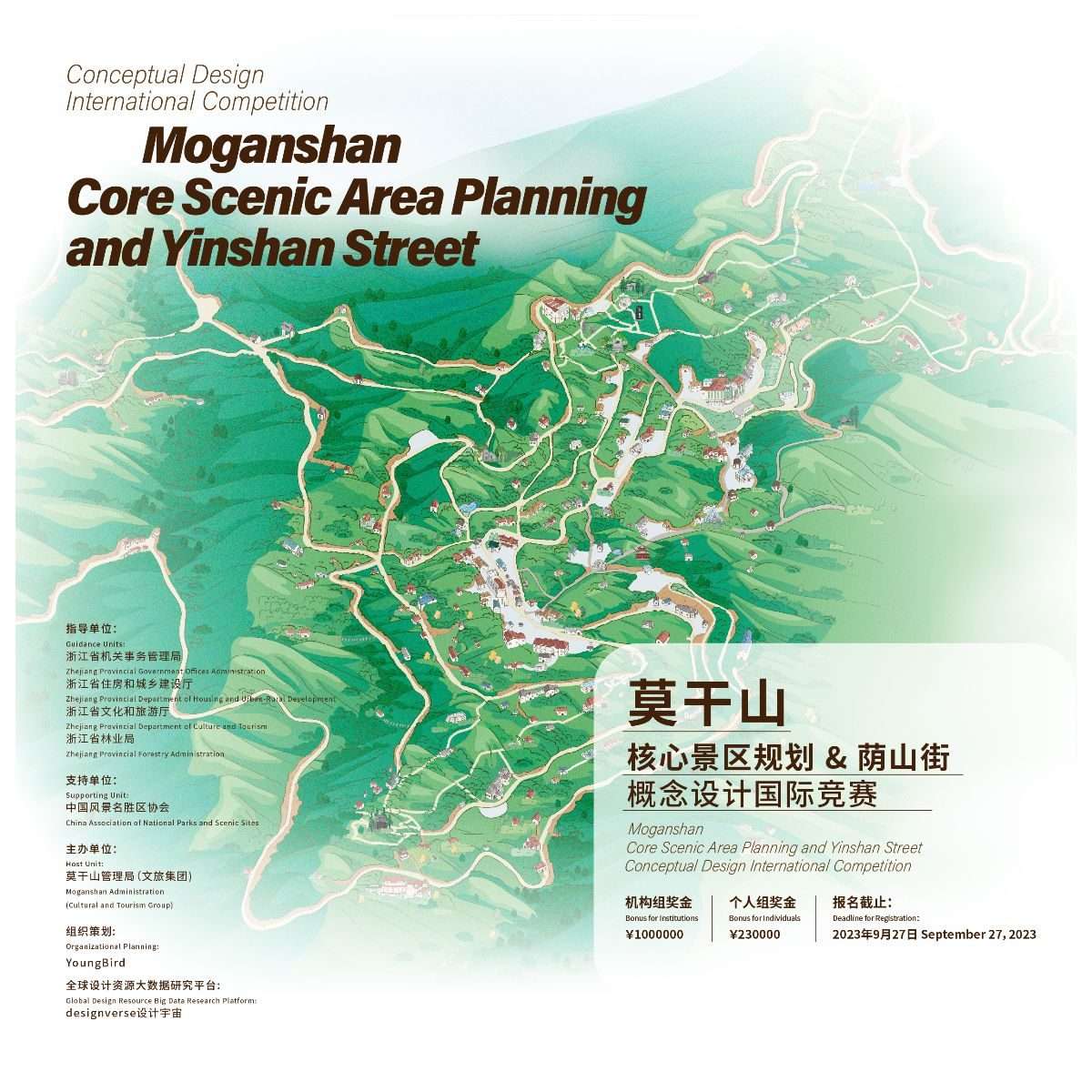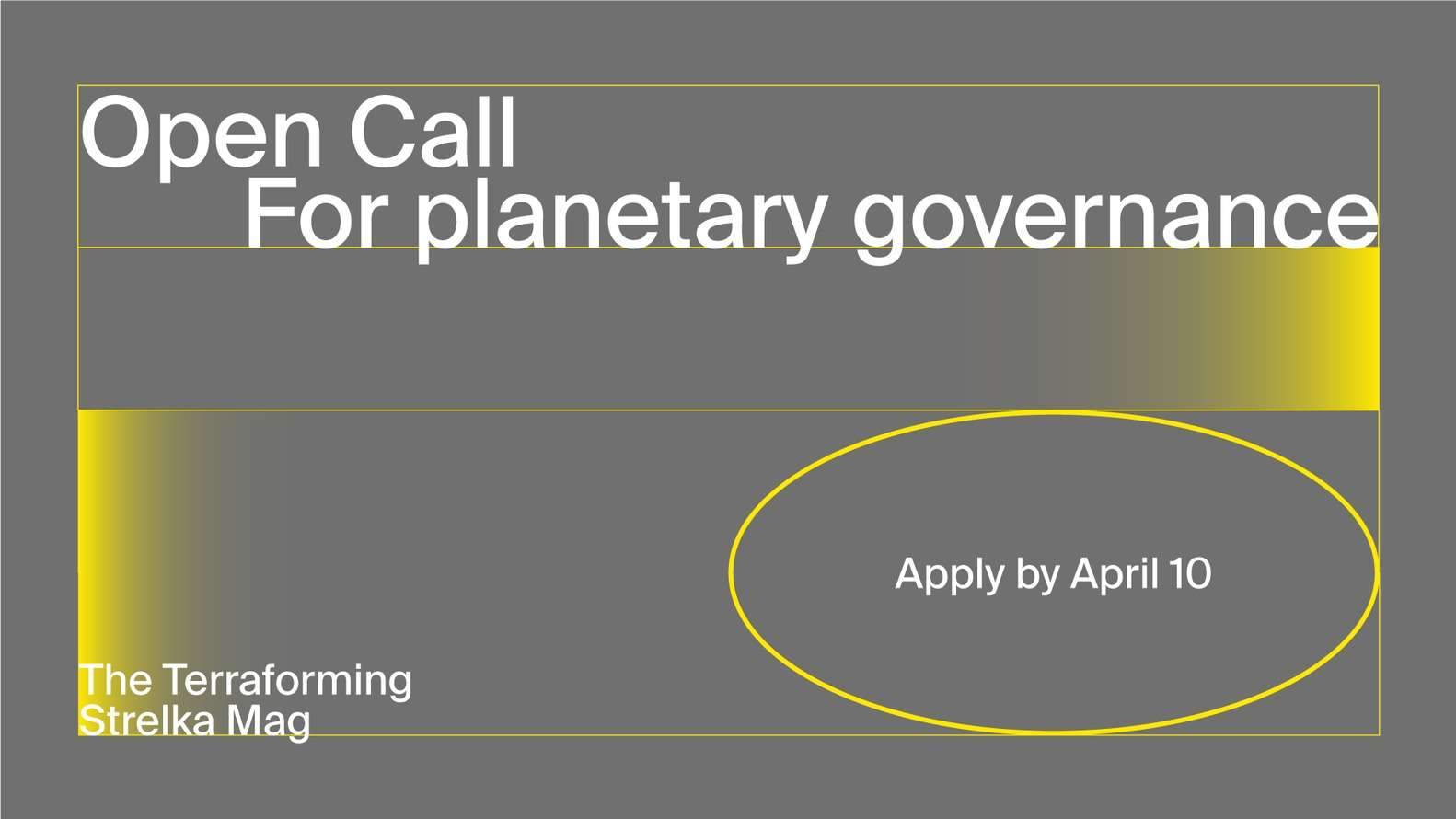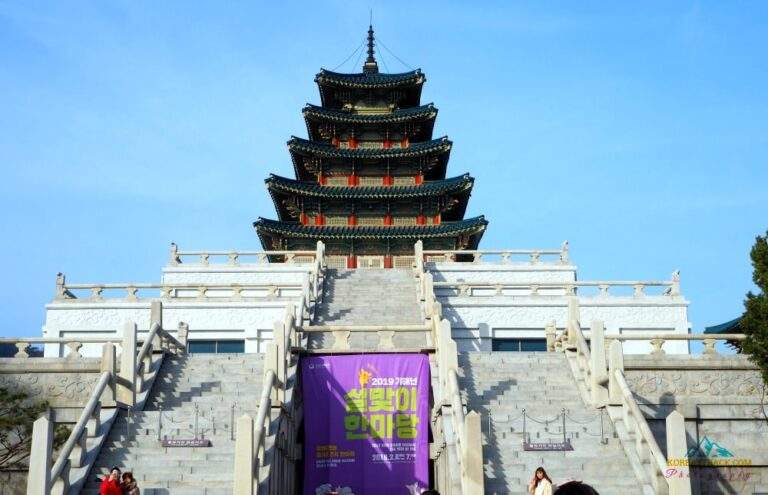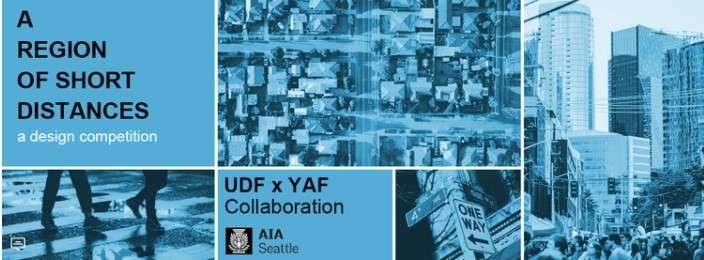Moganshan, located in the central region of the Yangtze River Delta, boasts a thousand years of cultural history. Renowned for its bamboo groves, mountain springs, and villas that are unparalleled in Jiangnan, Moganshan is acclaimed as the “Number One Mountain in Jiangnan” and is known as the “Cool World,” making it one of China’s top four summer retreats. It is also referred to as the “World Modern Architecture Museum”. In the future, Moganshan aims to become an internationally renowned tourist destination in the Yangtze River Delta region.
Competition Goals
I. Moganshan Core Scenic Area Business Format Planning:
1. Highlighting the main role of platform and engine played by the Moganshan core area, making it complementary to the business formats at the foot of Moganshan;
2. Emphasizing Moganshan’s Features: Highlight the natural ecology and cultural characteristics of Moganshan, deeply exploring the unique characteristics of the scenic spots;
3. Determining Optimal Spatial Layout: Tailor the most suitable spatial structure, functional clusters, and values for different age and consumer groups;
4. Establishing Functional Spatial System: Guided by the needs of the target users, plan leading business formats, adopting product-oriented approaches, and logically constructing the content of various functional spaces;
5. Allotting Flexible Space: Fully consider spatial flexibility, reserving elasticity for subsequent iterations of operation of business format products.
II. Yinshan Street Architectural Conceptual Design:
1. Optimizing Space Layout and Functionality: Centered around the strategic positioning, logically organize functions and spatial layouts, precisely determine the positioning, functions, business formats, and core competitive strength of the buildings along the street;
2. Innovating Architectural Style: Innovate based on Moganshan’s century-old Shanghai style vacation culture, transform architecture clusters into unique scenery, and enhance the spatial appearance of Yinshan Street where the buildings are located, to fundamentally avoid the homogenized competition arising from replication of other scenic areas;
3. Creating Landmark Buildings: Landmark buildings possess distinctive design concepts, with bold innovation in form and façade, enriching business format contents. By integrating Moganshan culture, they can incorporate modern technology and new materials;
4. Integrating Ecology and Aesthetics: Respond to the natural environment, while holding aesthetic significance;
5. Creating Immersive Scenes: Based on pioneering business formats, create an immersive experi
III. Operational Planning Suggestions (Additional):
1. Highlighting Uniqueness of Moganshan Core Scenic Area: Fully leverage the distinctive advantage of core scenic area, considering a combination of and complementation to the business formats at the foot of Moganshan;
2. Emphasizing Moganshan’s Features: Highlight the refreshing and cool natural landscape and unique cultural history of Moganshan;
3. Enhancing Vacation Experience: Create vacation products that offer a feeling of accomplishment for visitors, particularly focus on creating standout core products to elevate the enjoyment and satisfaction of visitors when experiencing;
4. Feasibility: Follow the execution and implementation of the scenic area business format planning and block architectural conceptual design, ensure that the operational planning suggestions are informative and actionable during actual operations;
5. Cost Control and Profitability: Based on the aforementioned objectives, ensure reasonable cost control under the executed plan, while thoroughly considering project cooperation and profitability models.
Competition Contents
The project demands the preservation and inheritance of Moganshan’s cultural heritage, with a primary focus on ecological considerations to retain the essence of Moganshan. The design should strive for a harmonious development, balancing preservation and progress. The Masterplan of Moganshan Scenic Spots (2018-2035) serves as the basis for the competition proposals.In regard to the 3-square-kilometer scope of Moganshan’s mountaintop core scenic area, a business format planning is proposed, along with operational suggestions (additional), and enhancements to the spatial appearance and innovative architectural style of the 400-meter Yinshan Street. The main contents are as follows:
I.Planning Proposal:
1. Analysis and Interpretation of Regional Macro-economic Development Status, including the current status and prospects of regional macro-economic development, interpretation of spatial and traffic routes planning around the region, and research on the disparate development and positioning of various sectors within the region;
- Analysis of Relevant Developable Natural Resources and Property Conditions, including the zoning, classification, and positioning assessment of planning sectors within the region, the energy levels of commercial supporting facilities radiating around each zone, analysis of project site conditions: project location and key indicators, parcel-specific planning constraints, current parcel status, analysis of potential project development conditions: project traffic conditions, project surrounding environment;
- Development Models and Resource Analysis, including the identification and analysis of cutting-edge trends in the market’s industrial landscape, analysis of overall conceptual positioning and market trends, integration of local resources with development and emerging industry strategies, functional feature analysis, selection of relevant international case studies (industry derivatives, media integration, etc.);
4. Overall Project Positioning and Functional Layout Framework, including project positioning and vision, proposed project themes and features, suggestions for overall functional layout, suggestions for overall land use functions and proportions, suggestions for various types of supporting properties and their positioning within specific sectors.
II.Overall Enhancement Design Proposal:
1. Overall Planning Vision and Objectives;
- Higher-level Planning and Urban Spatial Pattern Analysis;
- Site Development Conditions Analysis;
- Overview and Evaluation of Current Overall Spatial Conditions;
- Overall Enhancement Planning Concepts, Strategies, and Framework;
- Suggestions for Overall Spatial Optimization and Enhancement Strategies;
- Regional and Surrounding Traffic Analysis and Overview, Site Accessibility Analysis and Enhancement Strategy Suggestions;
- Current Public Space Inventory: Analysis of Usage Rate and Vibrancy, and Enhancement Strategy Suggestions;
- Preliminary Suggestions for Site Plan;
- Preliminary Suggestions for Land Use and Related Indicators;
11. Identification of 3 Key Public Space Scene Nodes, Preliminary Spatial Intent and Aesthetic Suggestions.
III.Refine Planning Proposal and Overall Enhancement Design Proposal:
Based on the analysis and interpretation of the refined planning proposal and overall enhancement design proposal, this approach puts forward conceptual positioning and project theme features. Based on a deep understanding of the market, it introduces strategically important products, establishes a project framework, and assesses feasible operational strategies and implementation routes in the future. The overall enhancement design proposal is adjusted and refined, incorporating considerations from the planning proposal to contemplate the project’s practicality and feasibility in the future implementation.
1. Refine Planning Proposal:
a. Suggestions for Project Positioning Refinement:
- Suggestions for project theme features;
- Suggestions for overall functional zoning of the project;
- Suggestions for overall land use functions and proportions, along with analysis of how different spatial uses can drive customer groups.
- Evaluation of Related Project Economic Value, Operational Feasibility, and Utilizable Market Research:
- Research and assessment of the feasibility of implementing related business formats and operations;
- Collaborative models and selection criteria for core platforms and operators;
- Business and cooperation models for operating entities, core demands, and strategic development intentions;
- Initial contact for development intentions and potential resource integration of the project.
- Refine Overall Enhancement Design Proposal:
- Optimization and refinement of overall enhancement planning concepts, strategies, and framework;- Optimization and adjustment of overall spatial layout;
- Optimization and adjustment of functional layout;
- Optimization of land use and related indicators;
- Optimization and adjustment of external accessibility (vehicular/pedestrian);
- Streamlining of internal circulation optimization;
- Enhancement and improvement of public space quality and vibrancy;
- Further refinement and adjustment of spatial intents and aesthetic suggestions for 3 key public space scene nodes;
- Optimization and adjustment of site plan for the planning;
- Renderings depicting spatial scene layouts and design concepts.
IV. Operational Planning Suggestions (Additional):
1. Suggestions for Development Model of Highlighted Core Product, including the study of the timing of project launches in relation to neighboring sectors, guiding principles for overall scope layout, suggestions for relationships in various land uses, cooperation and profit models, and guiding suggestions for relationships in various land uses and related operational strategies;
2. Suggestions for Other Relevant Development Strategies, including principles for overall project development strategies, research on categorized visitor flow circulation, strategies of project development timing and advancement.
V. Yinshan Street Conceptual Architectural Design:
1. Project Conceptual Planning:Submission of project conceptual planning deliverables: Current site analysis, specific project planning, site plan, analysis of functional business format organization, analysis of traffic organization flow strategies, scheme renderings (perspective views, aerial views);
2. Conceptual Architectural Design:Submission of conceptual architectural design deliverables: Conceptual diagrams of building volumes, all buildings renovation design, building plans, elevations, sections, and renderings of all single buildings. (See the attached file “Yinshan Street Renovation and Upgrading Scope”)
Participants for agencies shall complete all the competition contents stated above. And participants for individuals can only complete item 5 of the competition contents, i.e. Yinshan Street Conceptual Architectural Design.
Review Committee
The Review Committee will be composed of experts from various industries, including planning and design, tourism development, scenic area operation, and cultural promotion and planning. The focus will be on inviting top domestic experts from leading cultural tourism, scenic area, and planning agencies to form the committee.
Competition Process
The competition process consists of two stages: Design Agency Prequalification Selection and Design Proposal Competition.
Stage One: Design Agency Prequalification Selection
1. Participants submit relevant application materials based on the competition brief. The competition organizing committee, appointed by the host, holds the “Design Agency Prequalification Selection Meeting” to select outstanding participants from the eligible applicants to proceed to the next stage of the Design Proposal Competition.
- The shortlisted participants must submit the “Competition Confirmation Letter” within the designated time.3. Participants who do not receive the Shortlist Notice should consider themselves not selected, and the competition organizing committee will not issue further notices.
Stage Two: Design Proposal Competition
1. The shortlisted participants submit their designdeliverables in accordance with the competition brief.
2. The competition organizing committee, appointed by the host, holds the “Expert Review Meeting.” The participating applicants (either independent entities or consortia) present and defend their design proposals, providing on-site presentations of their design proposals. The competition review committee conducts evaluations and determines related awards.
3. Each shortlisted participant is allowed to submit only one design proposal.
Stage One: Design Agency Prequalification Selection
1. Participants submit relevant application materials based on the competition brief. The competition organizing committee, appointed by the host, holds the “Design Agency Prequalification Selection Meeting” to select outstanding participants from the eligible applicants to proceed to the next stage of the Design Proposal Competition.
- The shortlisted participants must submit the “Competition Confirmation Letter” within the designated time.
3. Participants who do not receive the Shortlist Notice should consider themselves not selected, and the competition organizing committee will not issue further notices.
Stage Two: Design Proposal Competition
1. The shortlisted participants submit their designdeliverables in accordance with the competition brief.
2. The competition organizing committee, appointed by the host, holds the “Expert Review Meeting.” The participating applicants (either independent entities or consortia) present and defend their design proposals, providing on-site presentations of their design proposals. The competition review committee conducts evaluations and determines related awards.
3. Each shortlisted participant is allowed to submit only one design proposal.
Prizes
The total bonus for this competition is 1,230,000 RMB, which is divided into two parts, i.e. 1,000,000 RMB for agencies and 230,000 RMB for individuals. The winners and the results of planning and design that are specially creative will have the opportunities to be invited to participate in the design development for the project.
Bonus for Agencies: 1,000,000 RMB (tax included)Gold Award (1 winner): 500,000 RMB (tax included)
Silver Award (1 winner): 300,000 RMB (tax included)
Bronze Award (1 winner): 200,000 RMB (tax included)
Bonus for Individuals: 230,000 RMB (tax included)
Gold Award (1 winner): 100,000 RMB (tax included)Silver Award (1 winner): 80,000 RMB (tax included)
Bronze Award (1 winner): 50,000 RMB (tax included)
The prize money of this competition will be paid by the organizer, Moganshan Administration (Cultural and Tourism Group), and transferred to the account of the winning team agency. The winning team needs to fill out the prize claim form, provide information such as the team agency’s bank, account name, account number, etc. After being signed by all team members, the form should be sent to the competition organizing committee by the designated date, along with cooperation in the specified legal procedures.
Finally, read more architecture competitions.







